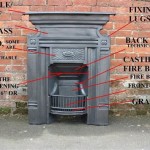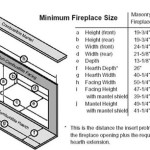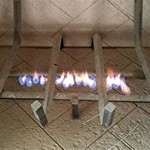Average Cost to Replace a Fireplace: A Comprehensive Guide
Fireplaces have long been a central feature in many homes, providing warmth, ambiance, and a focal point for gathering. However, over time, fireplaces can become outdated, damaged, or simply inefficient. Replacing a fireplace is a significant home improvement project that requires careful planning and understanding of the associated costs. This article aims to provide a comprehensive overview of the factors influencing the average cost to replace a fireplace, helping homeowners make informed decisions.
The cost of replacing a fireplace can vary widely depending on numerous factors, including the type of fireplace being installed, the complexity of the installation, necessary structural modifications, and regional labor costs. It is essential to consider all these elements to develop an accurate budget and avoid unexpected expenses.
Factors Affecting Fireplace Replacement Costs
Several key factors influence the overall cost of replacing a fireplace. Understanding these elements is crucial for homeowners seeking accurate cost estimates and effective project planning.
Type of Fireplace
The type of fireplace chosen significantly impacts the overall cost. The primary fireplace types include wood-burning, gas, and electric fireplaces, each with distinct features and price points.
Wood-Burning Fireplaces: These fireplaces typically involve the highest installation costs. This is due to the need for a chimney, proper ventilation, and adherence to strict building codes regarding clearances and fire safety. Installation may require masonry work, chimney construction or repair, and the associated labor can be significant. Material costs for a quality wood-burning fireplace insert or a complete fireplace unit can range from several hundred to several thousand dollars, depending on the size, style, and efficiency rating.
Gas Fireplaces: Gas fireplaces offer convenience and efficiency. However, they require a gas line connection, which can add to the installation cost if one is not already present. Running a new gas line involves plumbing work, permits, and potential disruption to existing structures. Venting options vary for gas fireplaces, including direct vent, B-vent, and vent-free models, each with different installation requirements and costs. Direct vent models typically require the most complex installation, involving venting directly to the outside through a wall or roof. Gas fireplace units themselves can range in price from a few hundred dollars to several thousand, depending on the features, size, and aesthetic design.
Electric Fireplaces: Electric fireplaces are generally the most affordable and easiest to install. They require only a standard electrical outlet and do not need venting or fuel lines. Installation is often a simple matter of placing the unit and plugging it in. Electric fireplaces come in various styles, including wall-mounted, freestanding, and insert models, with prices ranging from a few hundred dollars to over a thousand, depending on the size, features, and realism of the flame effect.
Complexity of Installation
The complexity of the installation process greatly influences the labor costs associated with fireplace replacement. Simple replacements of existing units in the same location will be less expensive than installations requiring significant modifications to the surrounding structure.
Existing Chimney and Venting: If the replacement involves utilizing an existing chimney or venting system, the cost can be lower than if a new chimney or venting system needs to be constructed. However, an inspection of the existing chimney is crucial to ensure it is in good condition and meets current safety standards. Repairs to the chimney, such as relining or masonry work, can add significantly to the project's overall cost.
Structural Modifications: Installations requiring structural modifications, such as opening up a wall or reinforcing the floor, will be more expensive. These modifications may necessitate the involvement of a structural engineer to ensure the integrity of the building is maintained. The complexity of these modifications can vary widely depending on the existing structure and the desired fireplace design.
Framing and Finishing: Framing the area around the fireplace and finishing it with materials such as drywall, stone, or brick can also add to the cost. The materials chosen and the complexity of the design will influence the overall expense. Custom designs or intricate stonework will generally be more expensive than simpler finishes.
Regional Labor Costs
Labor costs vary significantly depending on the geographic location. Urban areas with a higher cost of living generally have higher labor rates than rural areas. It is essential to obtain quotes from multiple contractors in the area to get a sense of the prevailing rates and ensure competitive pricing.
Contractor Selection: The choice of contractor can also influence the cost. Experienced and licensed contractors may charge higher rates, but they often provide higher quality workmanship and greater assurance of compliance with building codes and safety regulations. It is advisable to check the contractor's credentials, references, and insurance coverage before hiring them.
Permits and Inspections: Building permits are typically required for fireplace installations, and the cost of these permits can vary depending on the municipality. Inspections are also necessary to ensure the installation meets safety standards and building codes. The contractor should be familiar with the local permitting process and requirements.
Breaking Down Fireplace Replacement Costs
To provide a clearer understanding of the costs involved, it is helpful to break down the expenses into different categories.
Fireplace Unit: As mentioned earlier, the cost of the fireplace unit itself varies depending on the type, size, features, and brand. Electric fireplaces are generally the least expensive, followed by gas fireplaces, and then wood-burning fireplaces.
Installation Labor: Labor costs can range from several hundred dollars to several thousand, depending on the complexity of the installation. Simple installations of electric fireplaces may only require a few hours of labor, while complex installations of wood-burning or gas fireplaces can take several days.
Materials: Materials needed for installation can include venting pipes, gas lines, electrical wiring, framing lumber, drywall, stone, brick, and finishing materials. The cost of these materials will vary depending on the type of fireplace and the design of the installation.
Permits and Inspections: Permit fees and inspection costs can range from a few hundred dollars to over a thousand, depending on the municipality and the complexity of the project.
Chimney or Venting System: If a new chimney or venting system is required, the cost can be significant. A new chimney can cost several thousand dollars, depending on the height, materials, and complexity of the construction. Venting systems for gas fireplaces can also be expensive, especially for direct vent models.
Estimating the Average Cost
Providing an exact average cost for replacing a fireplace is challenging due to the wide range of variables involved. However, it is possible to provide a general estimate based on the type of fireplace and the complexity of the installation.
Electric Fireplace Replacement: The average cost to replace an electric fireplace ranges from $300 to $2,000. This includes the cost of the unit and the installation. More elaborate electric fireplaces with custom surrounds can push the price higher.
Gas Fireplace Replacement: The average cost to replace a gas fireplace ranges from $2,000 to $6,000. This includes the cost of the unit, gas line installation, venting, and labor. The price can increase significantly if extensive modifications are needed.
Wood-Burning Fireplace Replacement: The average cost to replace a wood-burning fireplace ranges from $3,000 to $10,000 or more. This includes the cost of the unit, chimney construction or repair, masonry work, and labor. The price can vary widely depending on the complexity of the installation and the condition of the existing chimney.
These are just general estimates, and the actual cost may vary depending on the specific circumstances of the project. It is always recommended to obtain multiple quotes from qualified contractors to get a more accurate estimate.
Homeowners should also consider the long-term costs associated with each type of fireplace. Wood-burning fireplaces require ongoing costs for firewood, while gas fireplaces require costs for gas usage. Electric fireplaces have lower operating costs, but may use more electricity.

Fixr Com Fireplace Repair Cost To Fix

How Much Does Fireplace Repair Cost In 2024 Forbes Home

How Much Does A Fireplace Remodel Cost 2024 Data Angi

Fixr Com Fireplace Repair Cost To Fix

Fixr Com Cost To Install A Fireplace Build

How Much Does A Gas Fireplace Cost Fireplaces Direct Learning Center

Fixr Com Fireplace Repair Cost To Fix

Fireplace Installation Cost 2024 Gas Wood Burning Electric

How Much Does A Gas Fireplace Insert Cost Forbes Home

Fixr Com Cost To Install A Fireplace Build








